An Active Common-Mode Voltage Canceler for PWM Converters in Wind-Turbine Doubly-Fed Induction Generators
Abstract
:1. Introduction
- The terminals of the PWM converter of the DFIG are connected to the rotor winding through the proposed ACMVC to suppress the CMV generated at the converter terminals.
- The stray capacitances of the DFIG, including those between conducting parts inside the generator, have been considered in the equivalent circuit of the DFIG.
- The bearing induced voltage (shaft voltage) and the leakage current to the ground (CMC) are calculated with and without the use of the proposed ACMVC to evaluate its effectiveness.
- The rise time of CMV and the peak value of CMC are correlated in the present work.
2. Common-Mode Voltage
3. Doubly-Fed Induction Generator Stray Circuit
4. Active Common-Mode Voltage Canceler
4.1. Operation of Active Common-Mode Voltage Canceler (ACMVC)
4.2. Design Parameters of the ACMVC
- T is the PWM period of the converter = 50 µs.
- Vdc is the DC link voltage of the converter = 800 V.
- Ac is the effective cross section area of the core = 235 mm2.
- Bc is saturation magnetic flux density = 0.43 T.
- AL is the specific inductance of the magnetic core = 13.2 ∗ 10−6 H.
- (1)
- A high-input impedance to minimize the capacitance of Cx.
- (2)
- A low-output impedance for eliminating any current effect on the compensating voltage (Vcomp).
- (3)
- A wide-frequency bandwidth of up to several megahertz.
5. Simulation Results
5.1. Effect of the Proposed ACMVC on the Common-Mode Voltage
5.2. Effect of the Proposed ACMVC on the Common-Mode Current
5.3. Effect of the Proposed ACMVC on Bearing Voltage
5.4. Relationship between CMC and Rise Time of CMV
6. Conclusions
Author Contributions
Acknowledgments
Conflicts of Interest
References
- Ogasawara, S.; Ayano, H.; Akagi, H. An active circuit for cancellation of common-mode voltage generated by a PWM inverter. IEEE Trans. Power Electr. 1998, 13, 835–841. [Google Scholar] [CrossRef] [Green Version]
- Ogasawara, S.; Akagi, H. Circuit configurations and performance of the active common-noise canceler for reduction of common-mode voltage generated by voltage-source PWM inverters. In Proceedings of the 2000 IEEE Industry Applications Conference. Thirty-Fifth IAS Annual Meeting and World Conference on Industrial Applications of Electrical Energy (Cat. No.00CH37129), Rome, Italy, 8–12 October 2000; pp. 1482–1488. [Google Scholar]
- Jabbar, M.A.; Azizur Rahman, M. Radio Frequency Interference of Electric Motors and Associated Controls. IEEE T. Ind. Appl. 1991, 27, 27–31. [Google Scholar] [CrossRef]
- Murai, Y.; Kubota, T.; Kawase, Y. Leakage current reduction for a high-frequency carrier inverter feeding an induction motor. IEEE T. Ind. Appl. 1992, 28, 858–863. [Google Scholar] [CrossRef]
- Ogasawara, S.; Akagi, H. Modeling and damping of high-frequency leakage currents in PWM inverter-fed AC motor drive systems. IEEE T. Ind. Appl. 1996, 32, 1105–1114. [Google Scholar] [CrossRef] [Green Version]
- Liu, R.; Ma, X.; Ren, X.; Cao, J.; Niu, S. Comparative Analysis of Bearing Current in Wind Turbine Generators. Energies 2018, 11, 1305. [Google Scholar] [CrossRef]
- Ruckert, B.; Hofmann, W. Enhanced direct power control of doubly fed induction generators. In Proceedings of the 14th International Power Electronics and Motion Control Conference EPE-PEMC 2010, Ohrid, Macedonia, 6–8 September 2010; pp. 27–33. [Google Scholar]
- Zitzelsberger, J.; Hofmann, W.; Wiese, A.; Stupin, P. Bearing currents in doubly-fed induction generators. In Proceedings of the 2005 European Conference on Power Electronics and Applications, Dresden, Germany, 11–14 September 2005; pp. 1–9. [Google Scholar]
- Adabi, M.E.; Vahedi, A. A survey of shaft voltage reduction strategies for induction generators in wind energy applications. Renew. Energy 2013, 50, 177–187. [Google Scholar] [CrossRef]
- Chen, S.; Lipo, T.A.; Fitzgerald, D. Source of induction motor bearing currents caused by PWM inverters. IEEE Trans. Energy Convers. 1996, 11, 25–32. [Google Scholar] [CrossRef]
- Busse, D.; Erdman, J. System electrical parameters and their effects on bearing currents. IEEE Trans. Ind. Appl. 1997, 33, 577–584. [Google Scholar] [CrossRef] [Green Version]
- Busse, D.; Erdman, J.; Kerkman, R.J.; Schlegel, D.; Skibinski, G. Bearing currents and their relationship to PWM drives. IEEE Trans. Power Electr. 1997, 12, 243–252. [Google Scholar] [CrossRef] [Green Version]
- Garcia, A.; Holmes, D.G.; Lipo, T.A. Reduction of Bearing Currents in Doubly Fed Induction Generators. In Proceedings of the 2006 IEEE Industry Applications Conference Forty-First IAS Annual Meeting, Tampa, FL, USA, 8–12 October 2006; pp. 84–89. [Google Scholar]
- Alewine, K.; Chen, W. A review of electrical winding failures in wind turbine generators. IEEE Electr. Insul. Mag. 2012, 28, 8–13. [Google Scholar] [CrossRef]
- Whittle, M.; Trevelyan, J.; Tavner, P.J. Bearing currents in wind turbine generators. J. Renew. Sustain. Energy 2013, 5. [Google Scholar] [CrossRef]
- Muetze, A.; Binder, A. Calculation of motor capacitances for prediction of the voltage across the bearings in machines of inverter-based drive systems. IEEE Trans. Ind. Appl. 2007, 43, 665–672. [Google Scholar] [CrossRef]

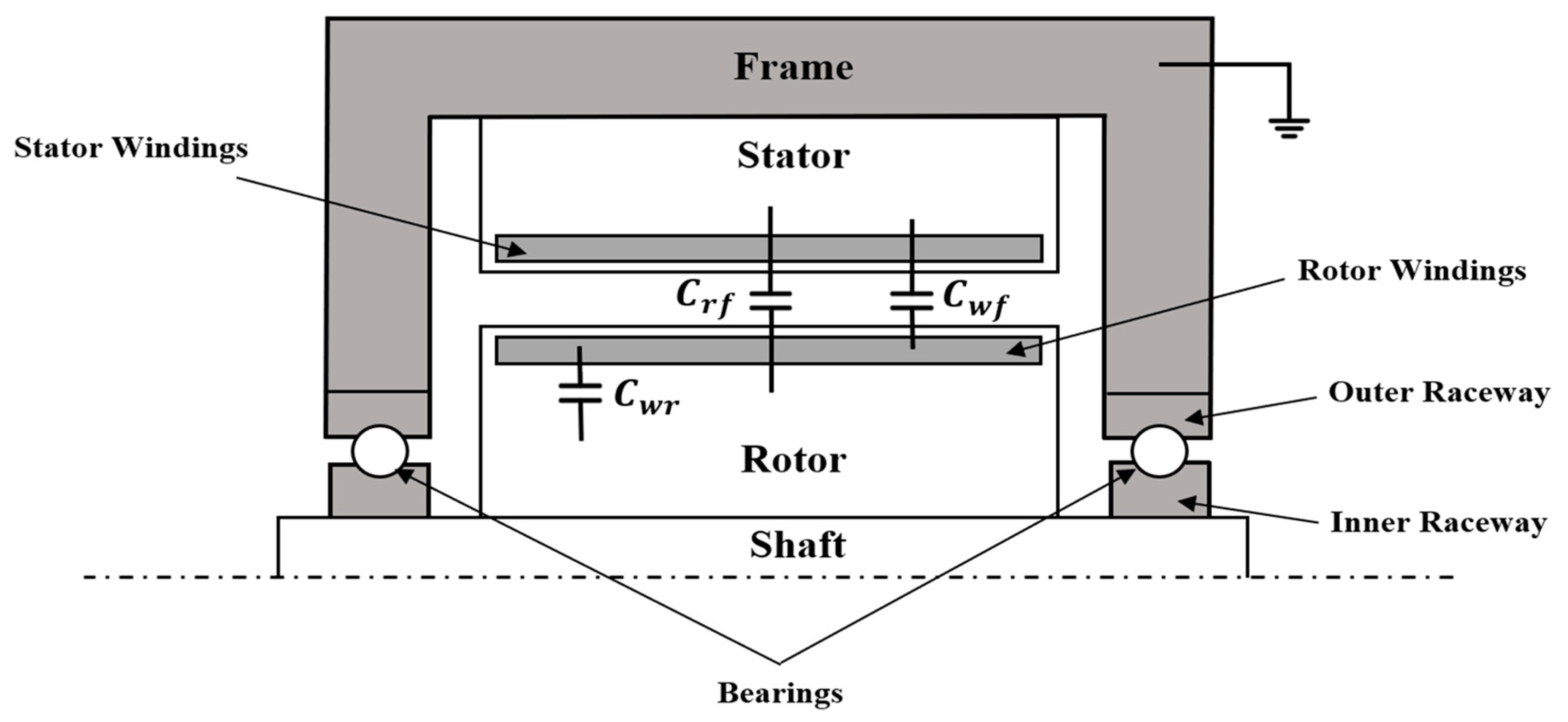
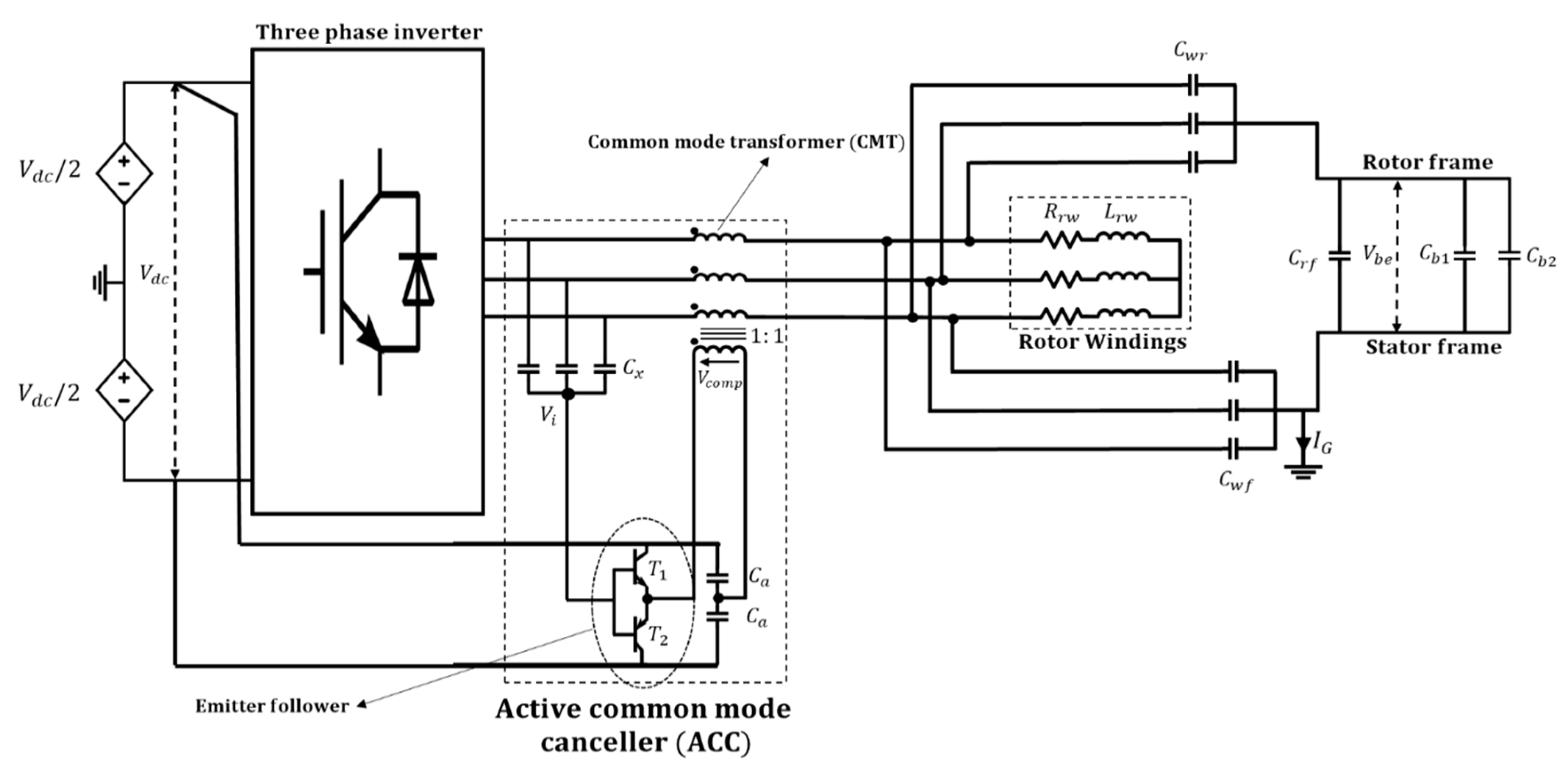
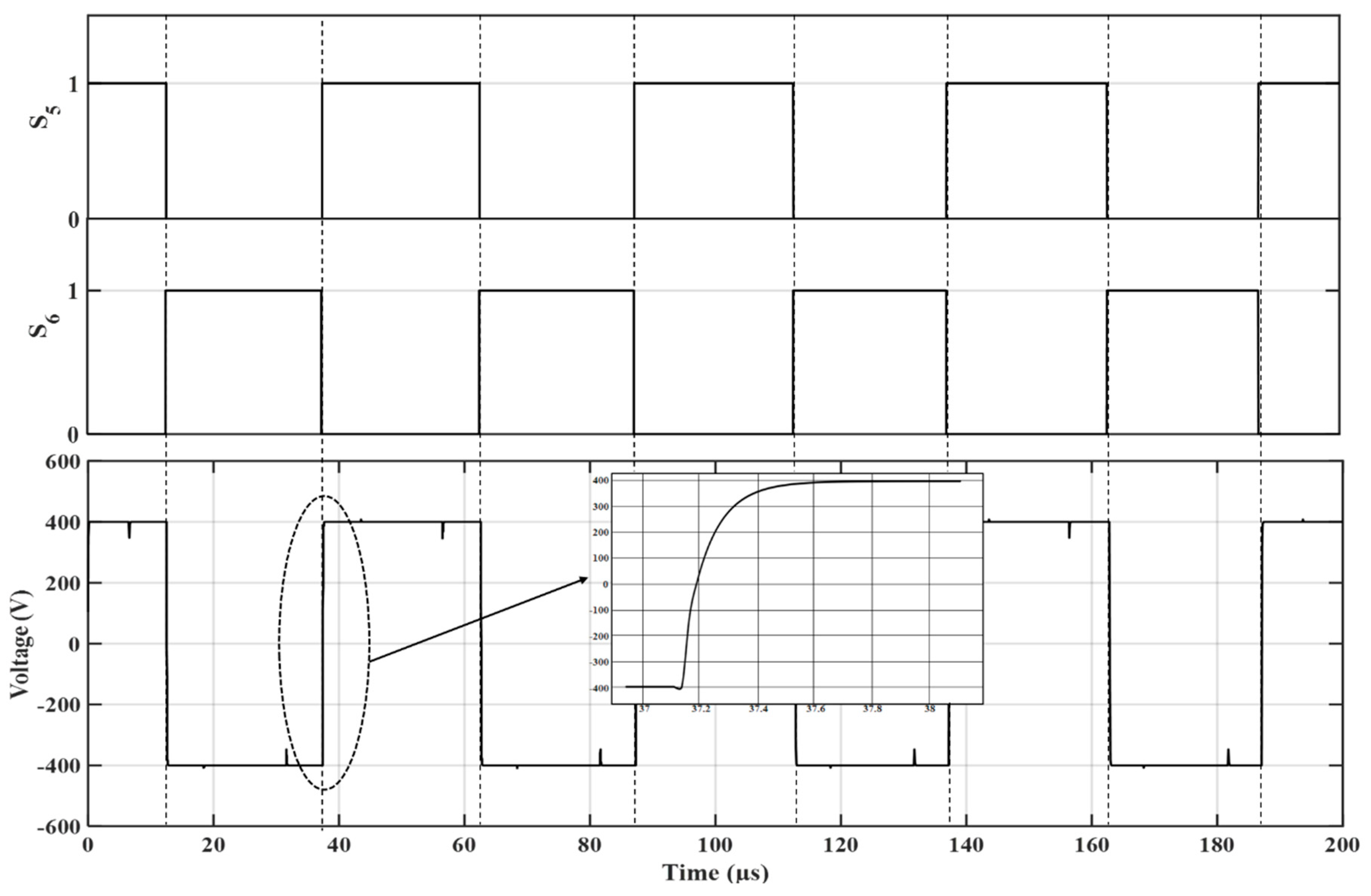
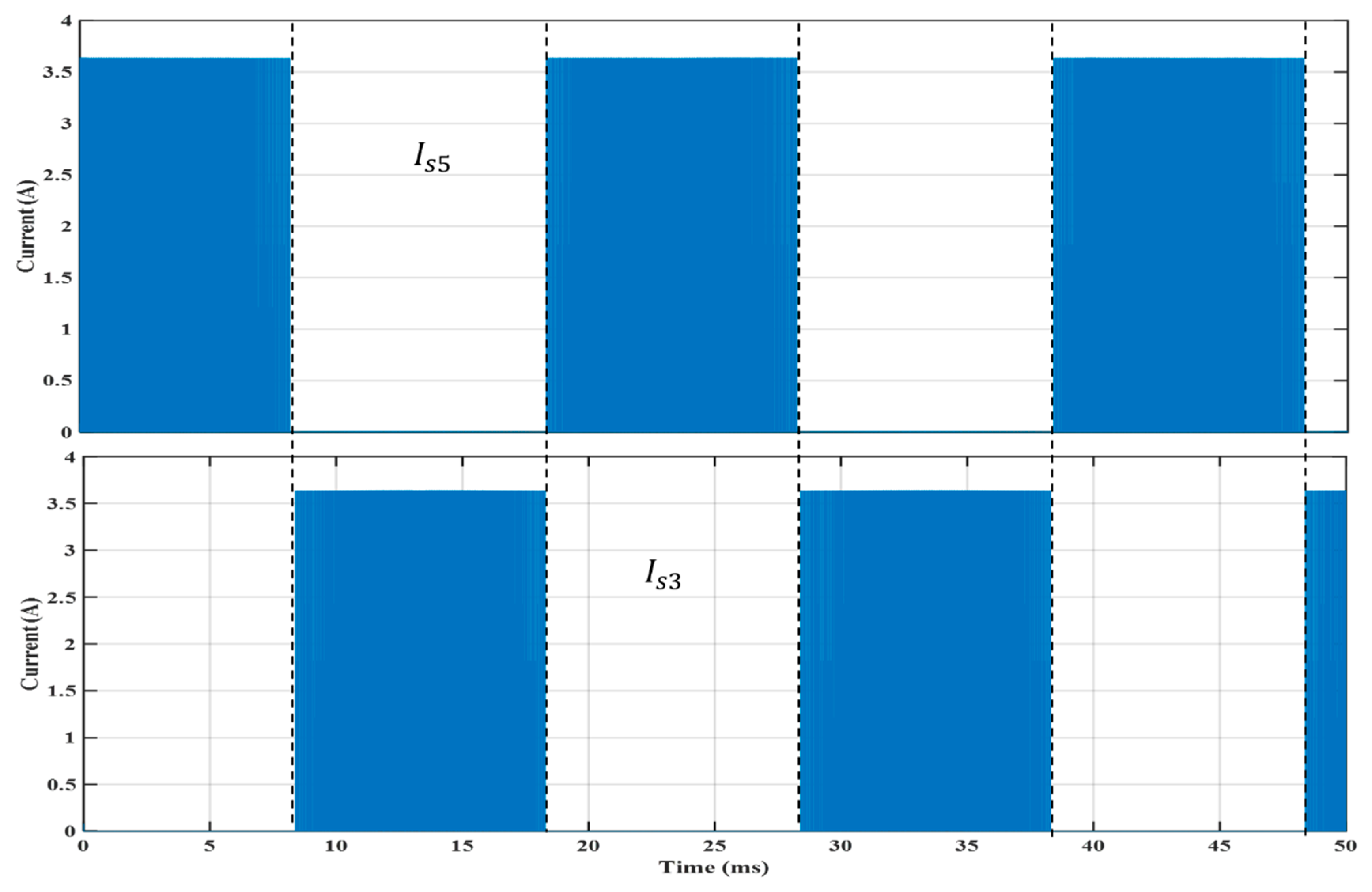
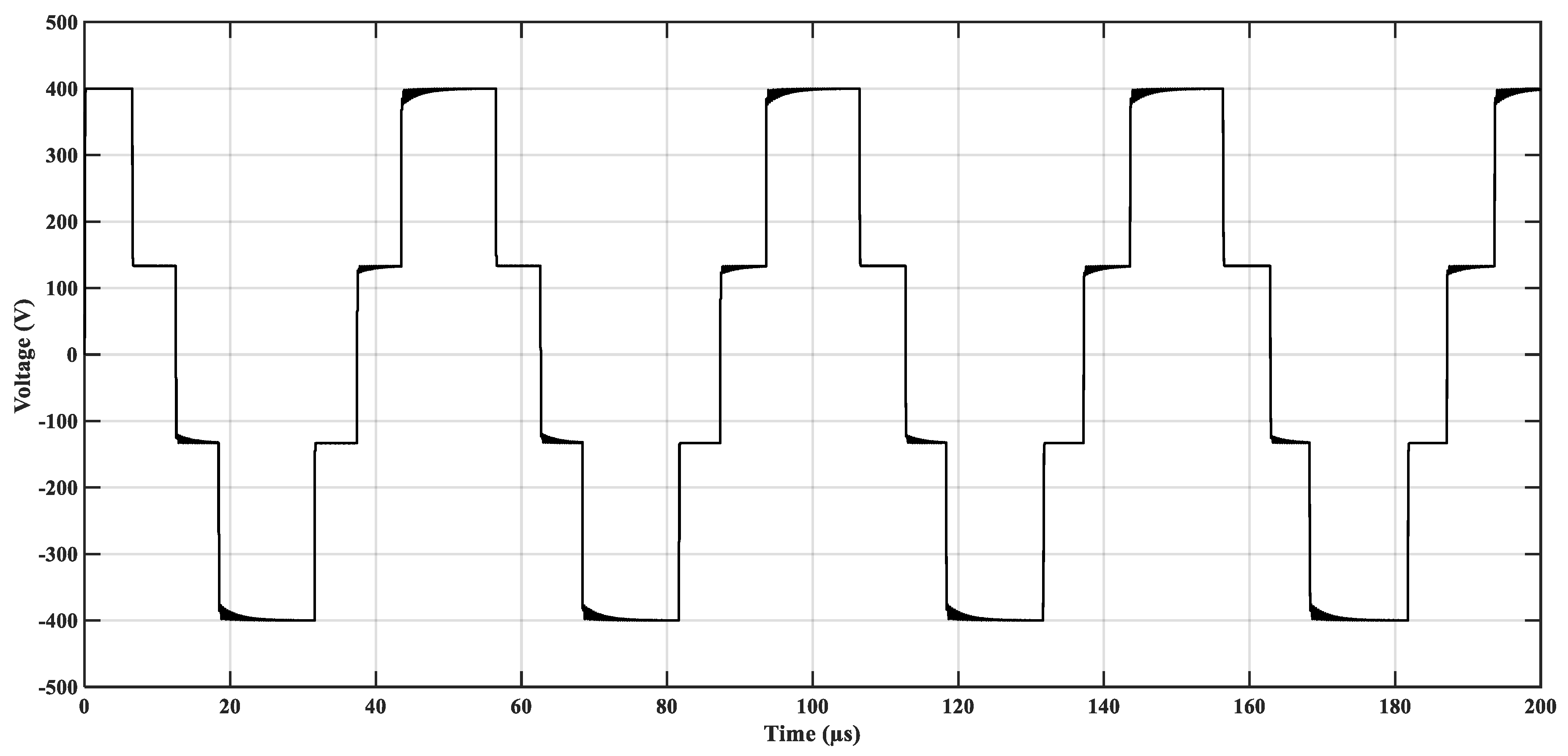
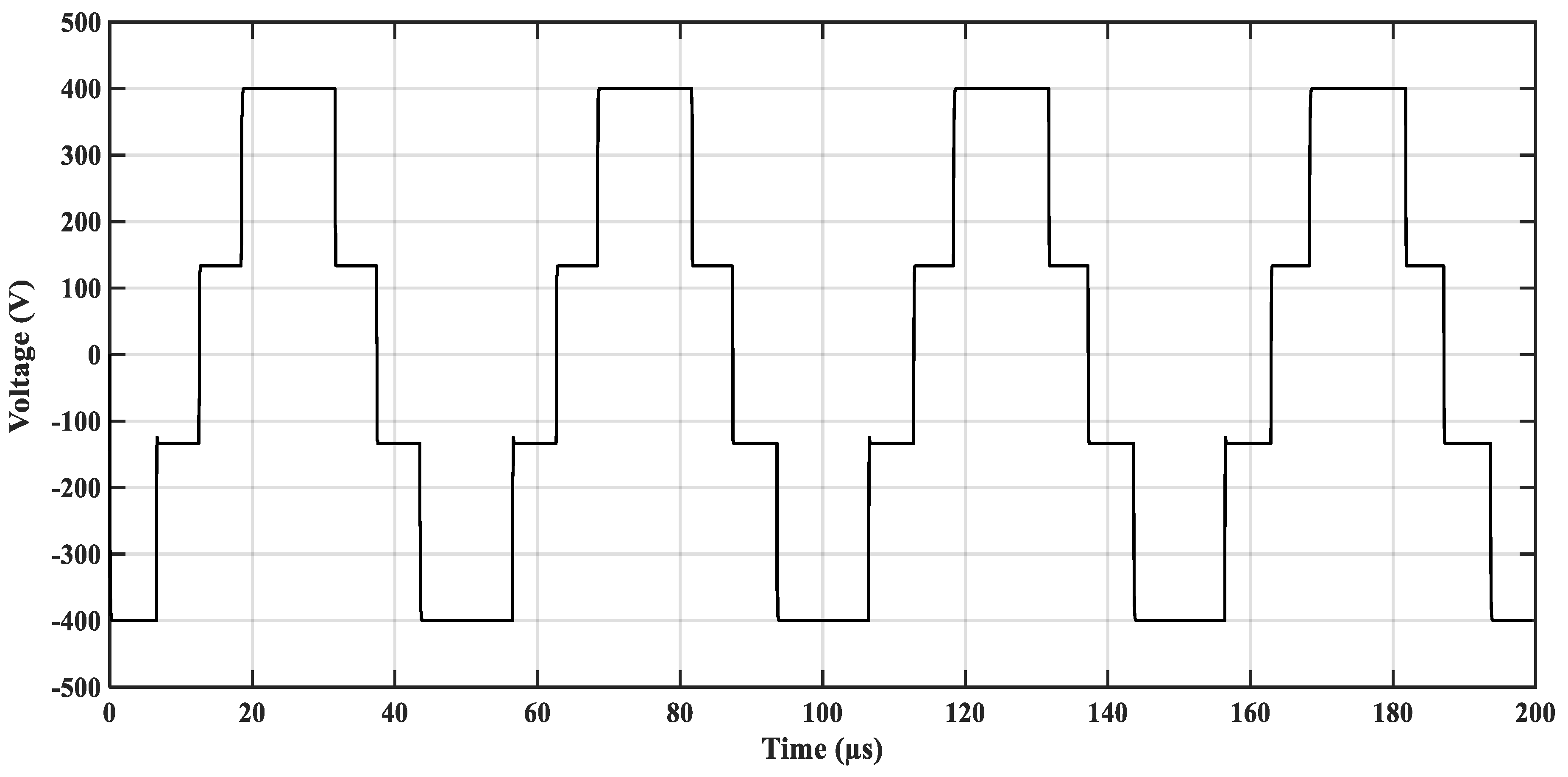
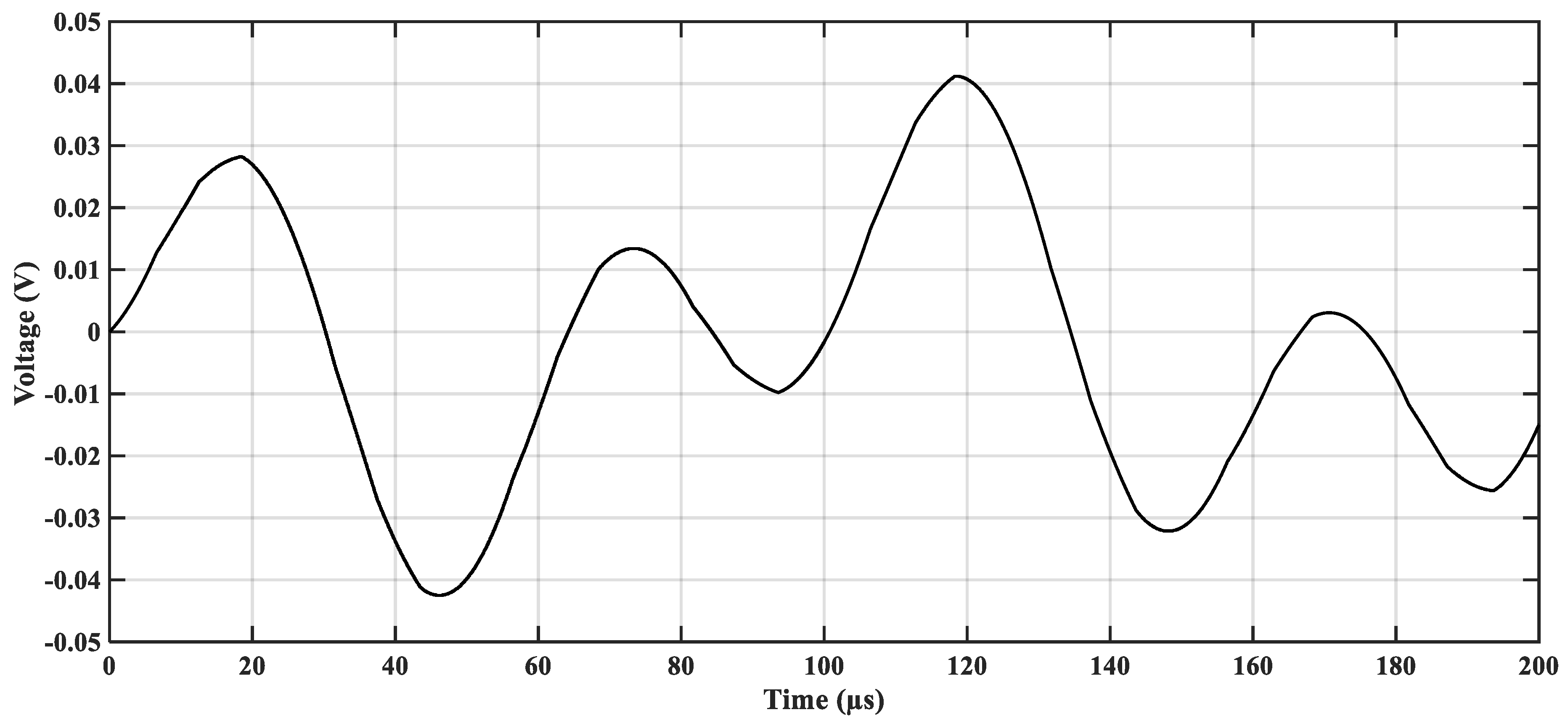
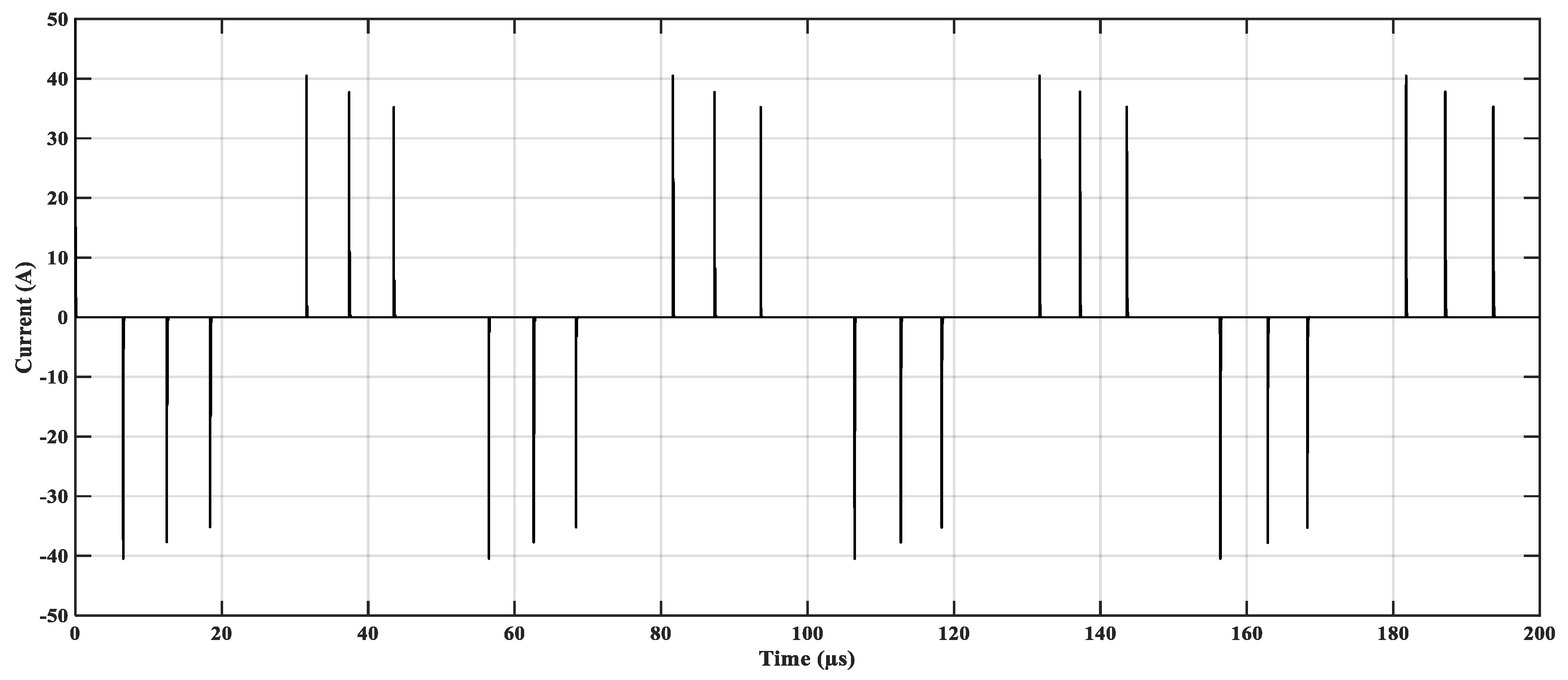
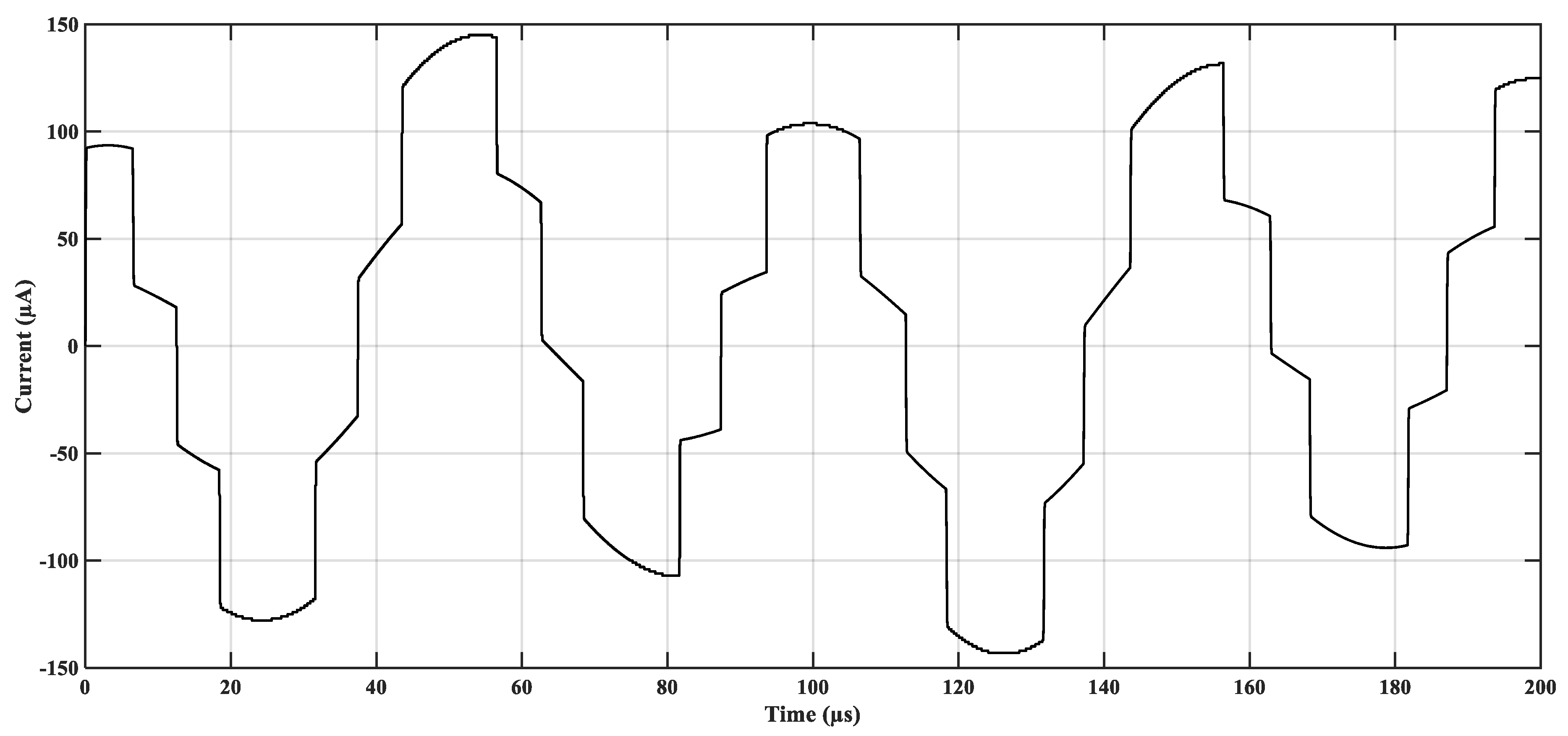
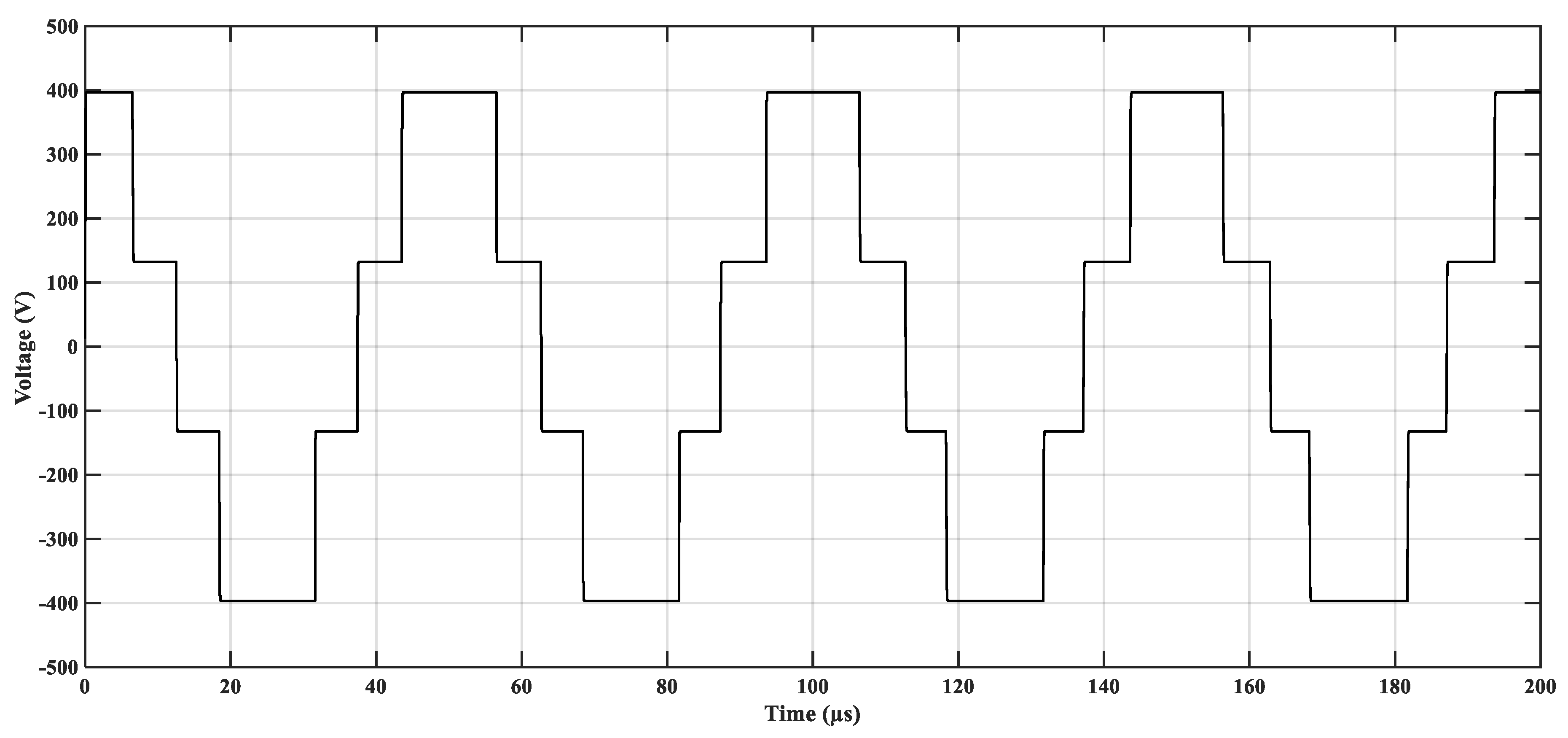
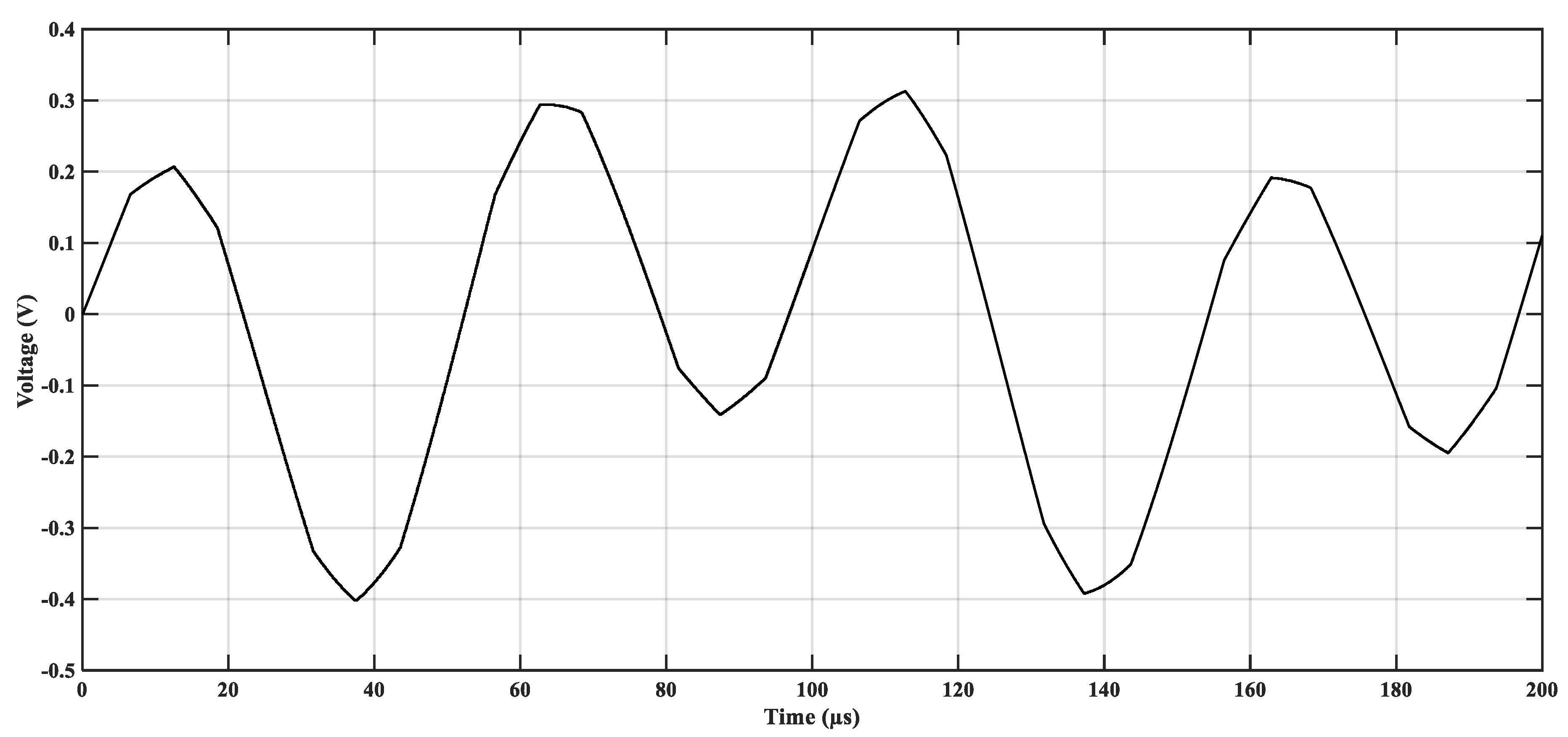

| Capacitance Symbol | Cwr | Cwf | Crf | Cb1&Cb2 |
|---|---|---|---|---|
| Value (nF) | 152.3 | 0.027 | 3.3 | 0.12 |
| Model | PBHV9560Z | PBHV8560Z |
|---|---|---|
| Maximum collector-base voltage VCBO (V) | −600 | 600 |
| Maximum collector-emitter voltage VCEO (V) | −600 | 600 |
| Maximum collector current IC (DC) (A) | −0.5 | 0.5 |
| Maximum power dissipation PC (W) (Tamb ≤ 25 °C) | 0.65 | 0.65 |
© 2019 by the authors. Licensee MDPI, Basel, Switzerland. This article is an open access article distributed under the terms and conditions of the Creative Commons Attribution (CC BY) license (http://creativecommons.org/licenses/by/4.0/).
Share and Cite
Zalhaf, A.S.; Abdel-Salam, M.; Ahmed, M. An Active Common-Mode Voltage Canceler for PWM Converters in Wind-Turbine Doubly-Fed Induction Generators. Energies 2019, 12, 691. https://doi.org/10.3390/en12040691
Zalhaf AS, Abdel-Salam M, Ahmed M. An Active Common-Mode Voltage Canceler for PWM Converters in Wind-Turbine Doubly-Fed Induction Generators. Energies. 2019; 12(4):691. https://doi.org/10.3390/en12040691
Chicago/Turabian StyleZalhaf, Amr. S., Mazen Abdel-Salam, and Mahmoud Ahmed. 2019. "An Active Common-Mode Voltage Canceler for PWM Converters in Wind-Turbine Doubly-Fed Induction Generators" Energies 12, no. 4: 691. https://doi.org/10.3390/en12040691
APA StyleZalhaf, A. S., Abdel-Salam, M., & Ahmed, M. (2019). An Active Common-Mode Voltage Canceler for PWM Converters in Wind-Turbine Doubly-Fed Induction Generators. Energies, 12(4), 691. https://doi.org/10.3390/en12040691






